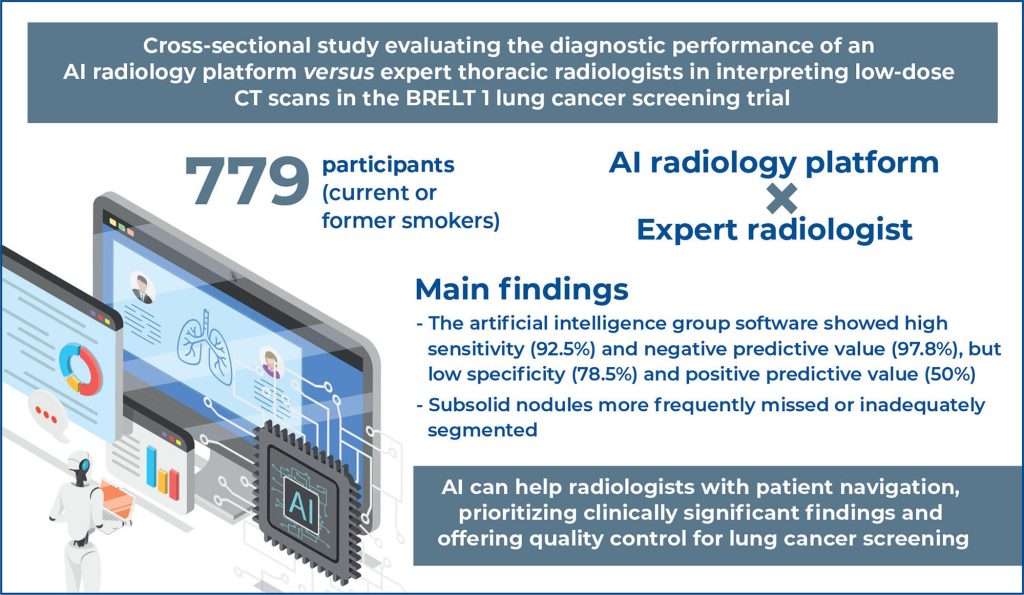einstein (São Paulo). 10/nov/2025;23:eAO1283.
Artificial intelligence in a Brazilian lung cancer screening program: accuracy and predictive values
DOI: 10.31744/einstein_journal/2025AO1283
Highlights
■ The artificial intelligence tool demonstrated high sensitivity (92.5%) and a negative predictive value of 97.8%. This effectively excluded examinations that were not clinically significant.
■ However, its low specificity (78.5%) and positive predictive value (50%) emphasize the importance of radiologist’s supervision.
■ – artificial intelligence missed 4.7% of nodules measuring >6mm, most of which were subsolid (62%).
■ The tool has the potential to improve workflows in lung cancer screening programs.
ABSTRACT
Objective:
We aimed to investigate the performance of an artificial intelligence (AI)-powered radiology platform for detecting pulmonary nodules on low-dose computed tomography of the chest compared with expert radiologists. The ancillary aims were to assess the Lung-RADS category agreement between the software and radiologists and to evaluate the percentage of missed lung nodules >6mm or those with inappropriate segmentation in the analysis performed by the AI software.
Methods:
This was a cross-sectional study. We evaluated low-dose computed tomography scans of 790 patients enrolled in a lung cancer screening program. All computed tomography scans were reviewed by an experienced team of thoracic radiologists (expert group). An AI algorithm analyzed the same set of scans independently, anonymously, and blinded to the computed tomography results (AI Group). The Lung-RADS classification system was used for both groups, and the reported findings were compared, considering expert analysis as the gold standard. Therefore, the accuracy results, negative and positive predictive values of AI, were measured.
Results:
The AI Group software showed high sensitivity (92.5%) and negative predictive value (97.8%) but low specificity (78.5%) and positive predictive value (50%). A significant number of subsolid nodules were missed in the AI group; however, none of them were >8mm (Lung-RADS 4).
Conclusion:
The AI software demonstrated a high negative and relatively low positive predictive values. The device appears to be an important adjunct, allowing the navigation team to prioritize examinations for clinically significant nodules.
[…]
Palavras-chave: Lung neoplasms; Mass screening; Tomography, x-ray computed; Radiation dosage; Artificial intelligence
113



